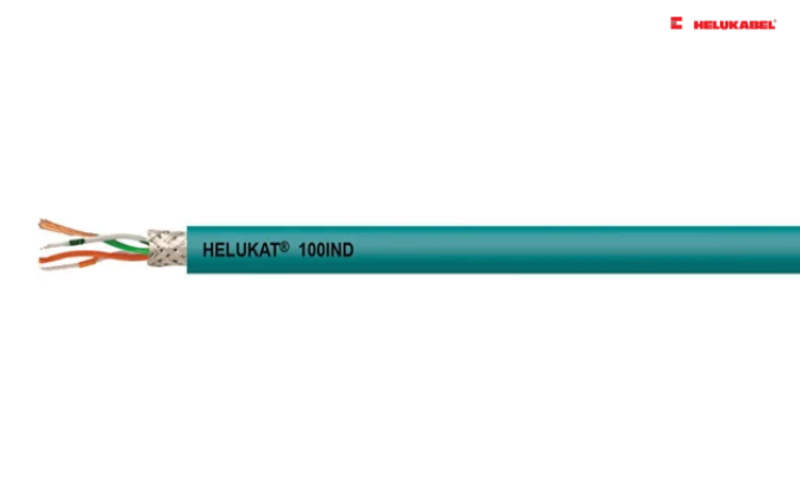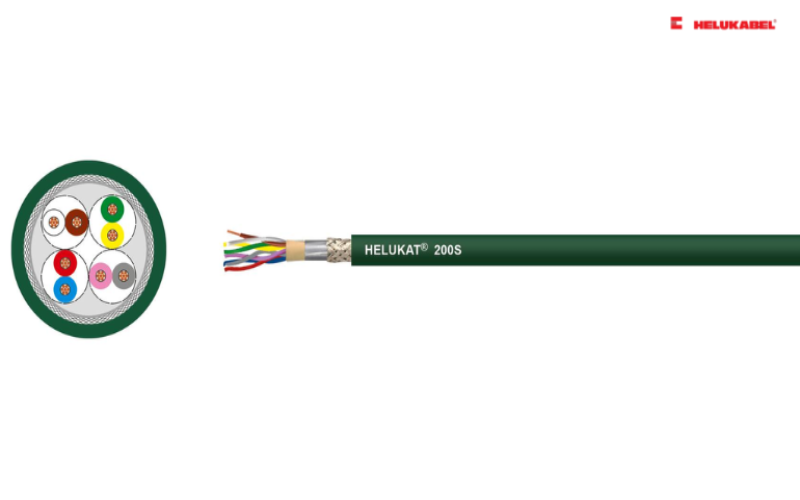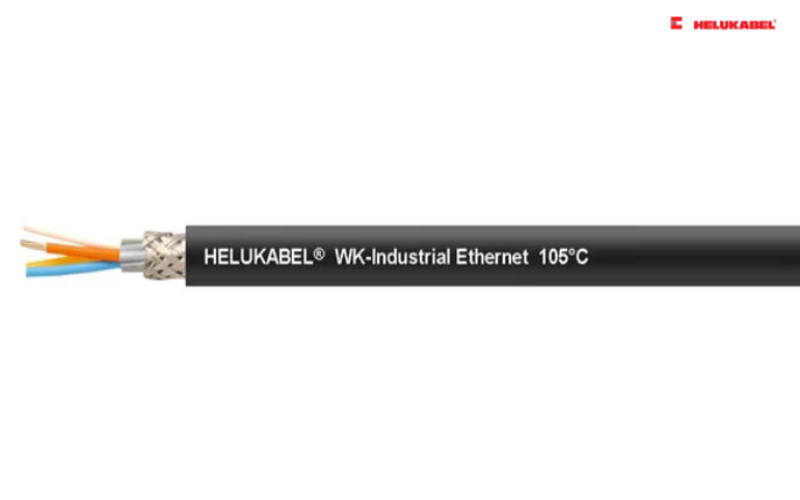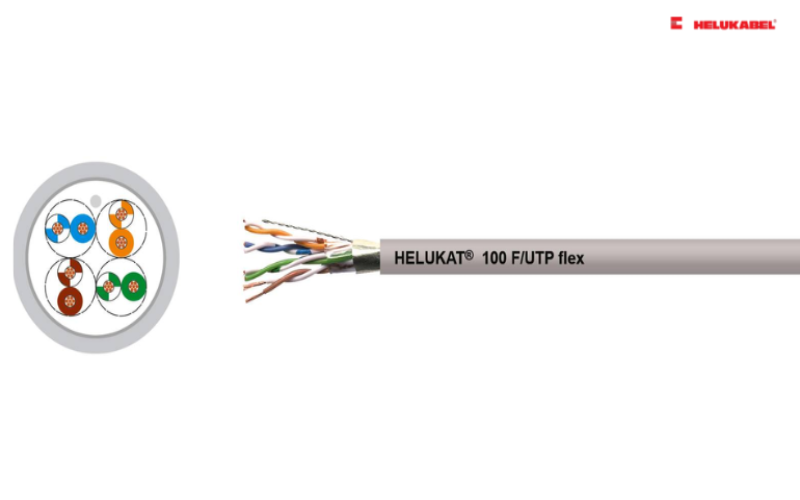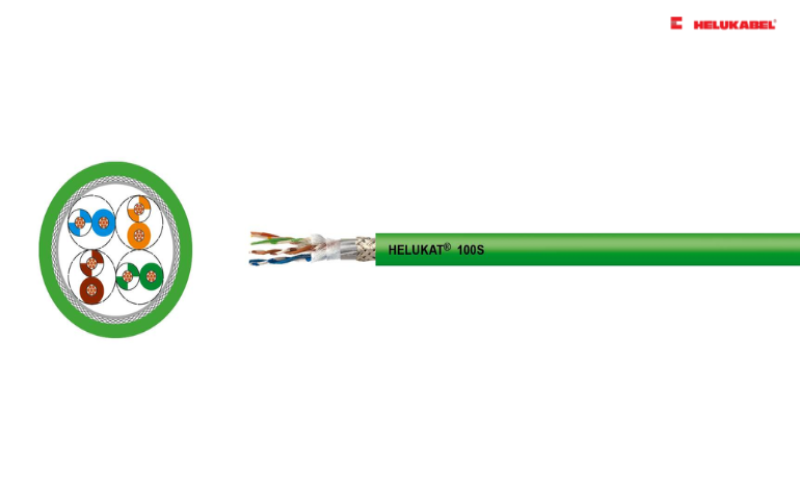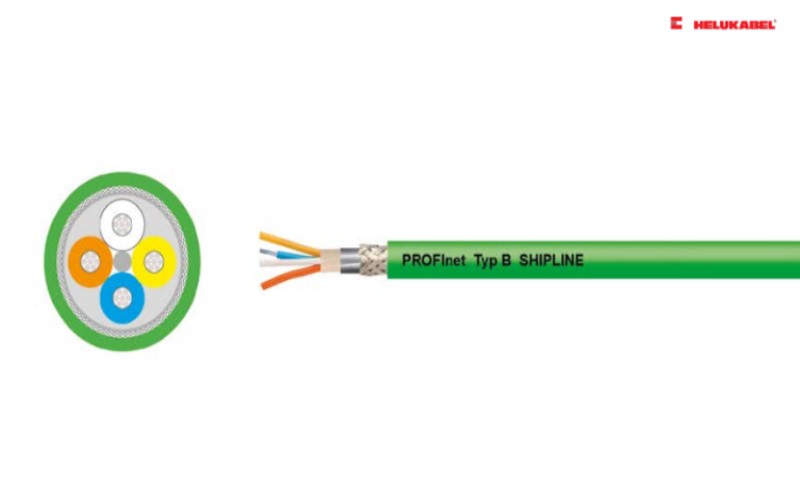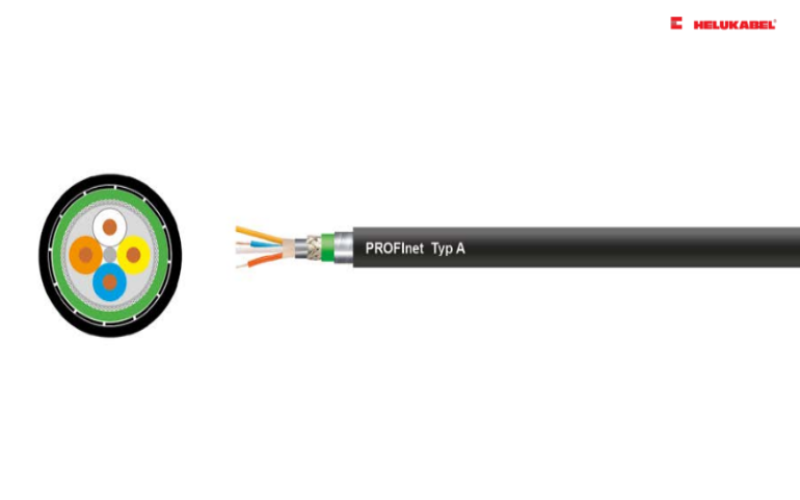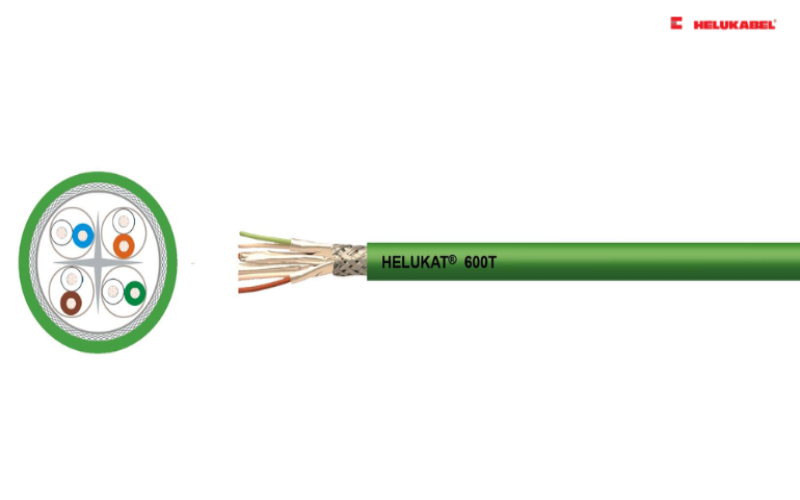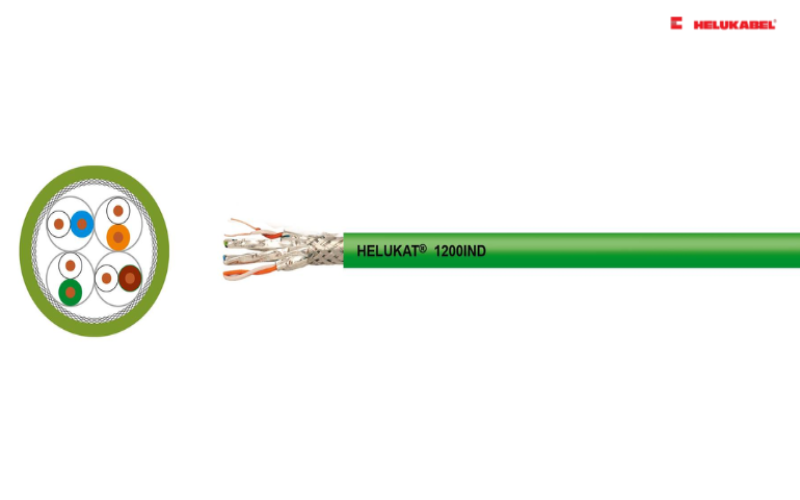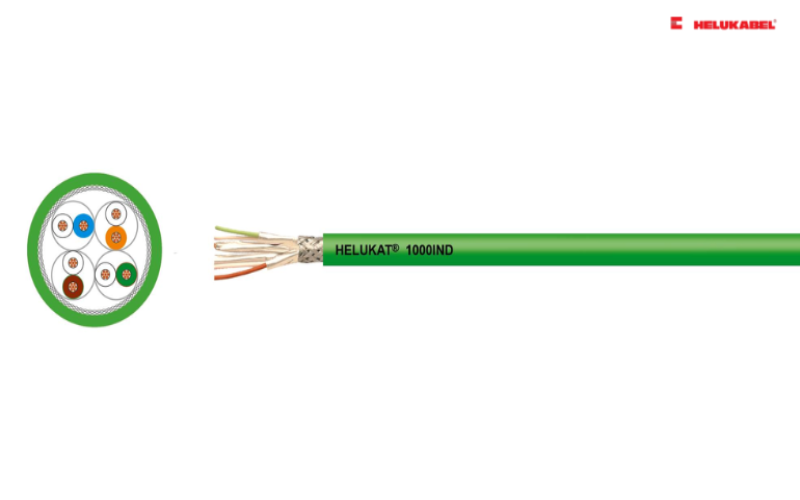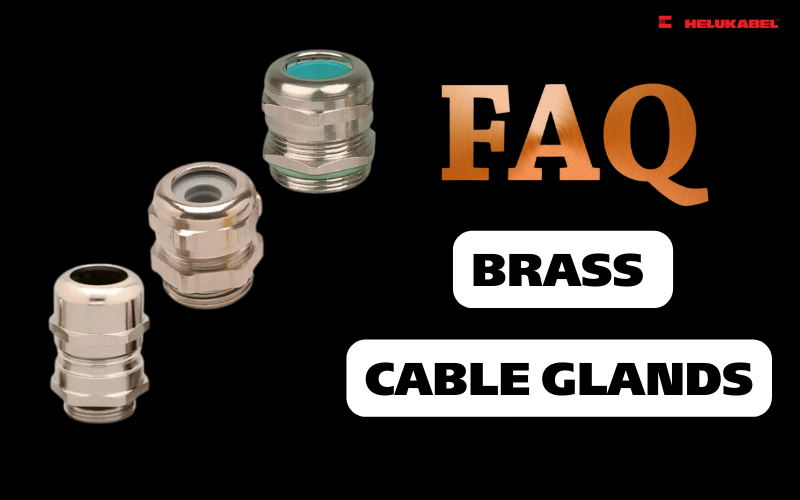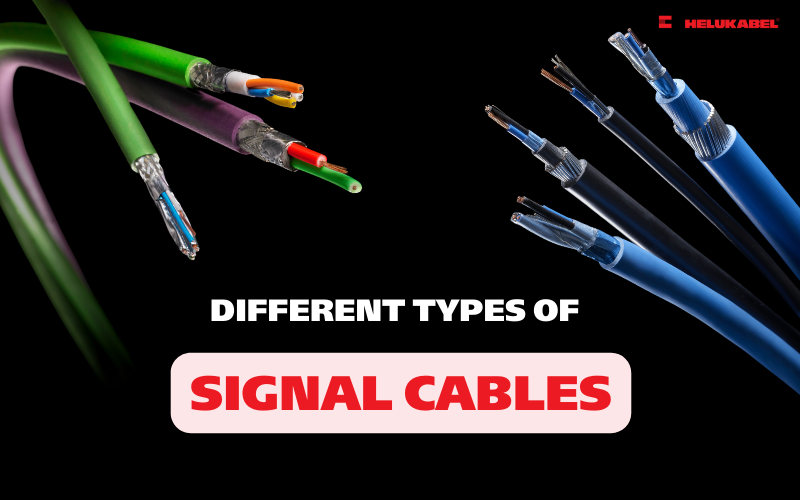What are ethernet cables? Their features and classifications
Ethernet cables primarily function to connect devices to a network and are commonly classified using the term “Cat.” Let’s explore the basic information about ethernet cables and the different types of ethernet cables in the following article.
1. What is Ethernet? What is an Ethernet cable?
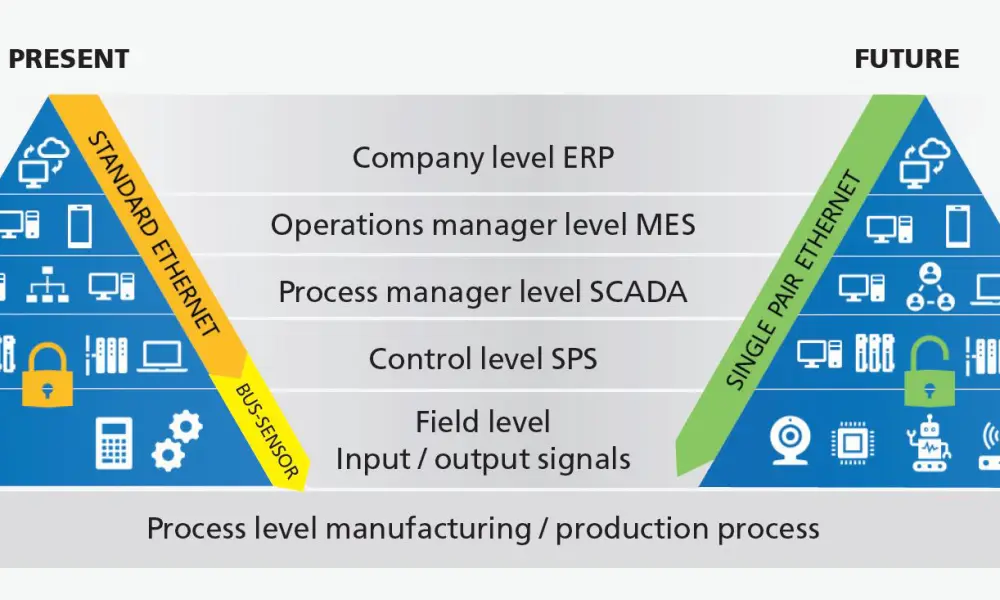
What is Ethernet technology?
1.1 What is Ethernet?
Ethernet is a very popular network connection technology that allows devices such as computers, printers, and storage devices to communicate with each other within a local area network (LAN). Ethernet was developed in the 1970s and has become the dominant connection standard in offices and factories. This technology operates based on the principle of transmitting data via cables, ensuring high transmission speeds and stability.
With Ethernet, devices on the network can communicate quickly and efficiently through a standardized protocol system, supporting the transmission of large amounts of data simultaneously. Thanks to its flexible scalability and upgradeability, Ethernet is suitable for both small and large networks such as data centers or industrial networks.
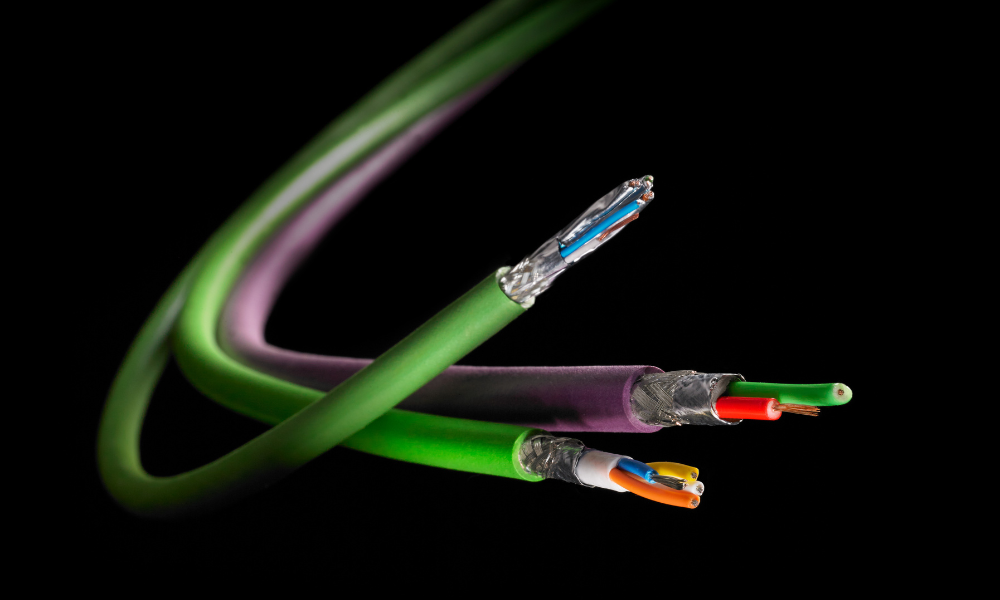
What is an Ethernet cable?
1.2 What is an Ethernet cable?
Ethernet cables (also known as Ethernet network cables) are cables designed to transmit data signals between connected devices in an Ethernet network system. These cables are typically made of conductors (copper or fiber optic) with an outer insulating jacket to protect the inner wires from environmental influences.
Ethernet cables provide wired connections between computer devices at the physical layer within a local area network (LAN). These cables connect to Ethernet ports on various devices, most commonly connecting a Wi-Fi router or modem to an internet access port or telephone line. Additionally, Ethernet cables are used to directly connect other devices besides computers, such as servers, storage devices, and printers, as well as smart devices like TVs and Internet of Things (IoT) devices, for example: surveillance devices, IP cameras, VoIP phones, and satellite receivers.
Ethernet cables also support "plug-and-play" connections; simply plug them into the appropriate Ethernet port to connect. A small latch helps secure the cable, or a port lock can be used for added security. If more ports are needed than are available, for example on a router, a network switch can easily be added to provide additional ports. Some ports also have LED lights that illuminate when connected and flash in a specific pattern to indicate connection status and usage level.
Ethernet cables come in a variety of colors for easy cable management and classification. Additionally, different colors of Ethernet cables can be used to distinguish between different floors, departments, or functions within a company, connected from a stack of network switches.
>>See more: HELUKABEL Ethernet cable products
2. Structural characteristics of Ethernet cables
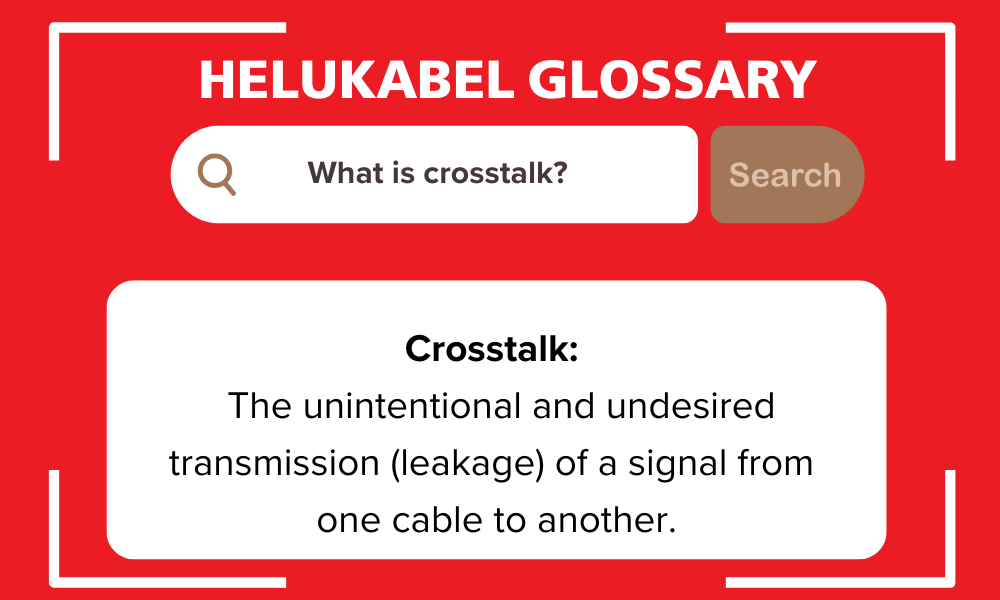
Crosstalk phenomenon
2.1 Outer sheath of an Ethernet cable
Ethernet cables come in various lengths, designs, and structures, though all share a common feature: eight wires twisted into four pairs, along with a rip cord. The twisted pairs help reduce crosstalk from adjacent wire pairs, enhancing resistance to electromagnetic interference (EMI). The rip cord is designed to cut through the cable's outer sheath, making handling and installation easier. When you strip the outer sheath of an ethernet cable, you'll see a simple structure of eight individual conductors twisted in a specific color-coded pattern as defined by ethernet cable standards. On closer inspection, you'll notice that the number of twists per inch increases depending on the cable type.
These twists in the cables play a critical role in protecting the signal, ensuring its stability, and minimizing interference. As current flows through the cables, it generates a magnetic field. Thanks to the twists, this magnetic field is shielded from external signals, significantly reducing interference, commonly referred to as "crosstalk."
>>See more: Understanding the phenomenon of crosstalk
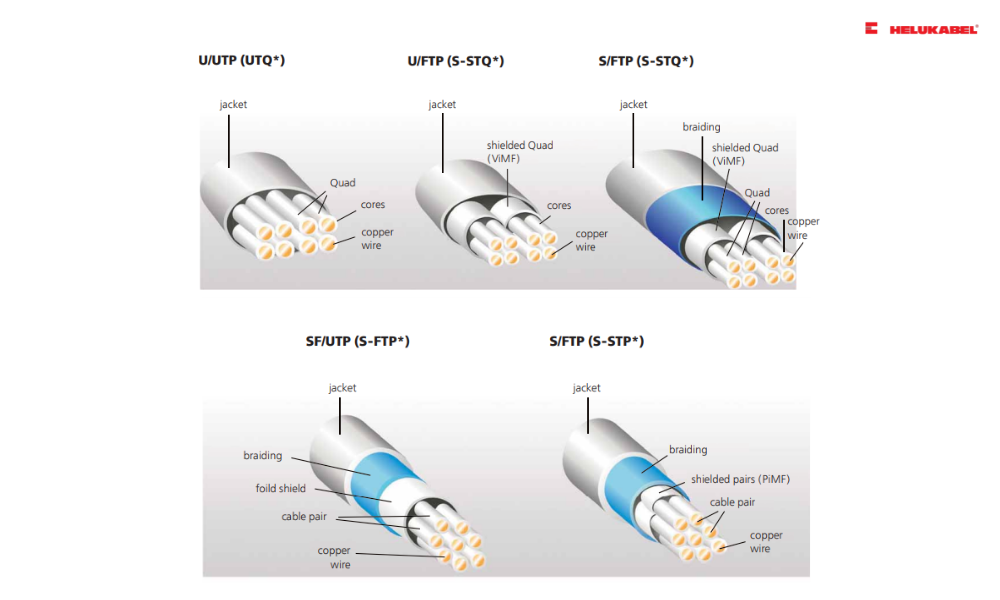
Shielded and unshielded Ethernet cables
2.2 Shielded and unshielded Ethernet cables
Ethernet twisted-pair cables are typically classified into two types: shielded and unshielded. Shielded twisted-pair cables (STP) have a protective conductive layer, such as tinned copper braids, copper tape, or conductive polymer. This shielding reduces interference from crosstalk and other external noise sources. The additional shielding enhances the cable's ability to perform in environments with high electromagnetic interference (EMI).
Unshielded twisted-pair cables (UTP) lack any protective shielding layer. They are simpler in design, with wire pairs bundled inside a rubber or plastic outer sheath. UTP cables are suitable for most standard LAN environments. Since STP cables are thicker and less flexible, UTP cables are often preferred for easier installation in typical network setups.
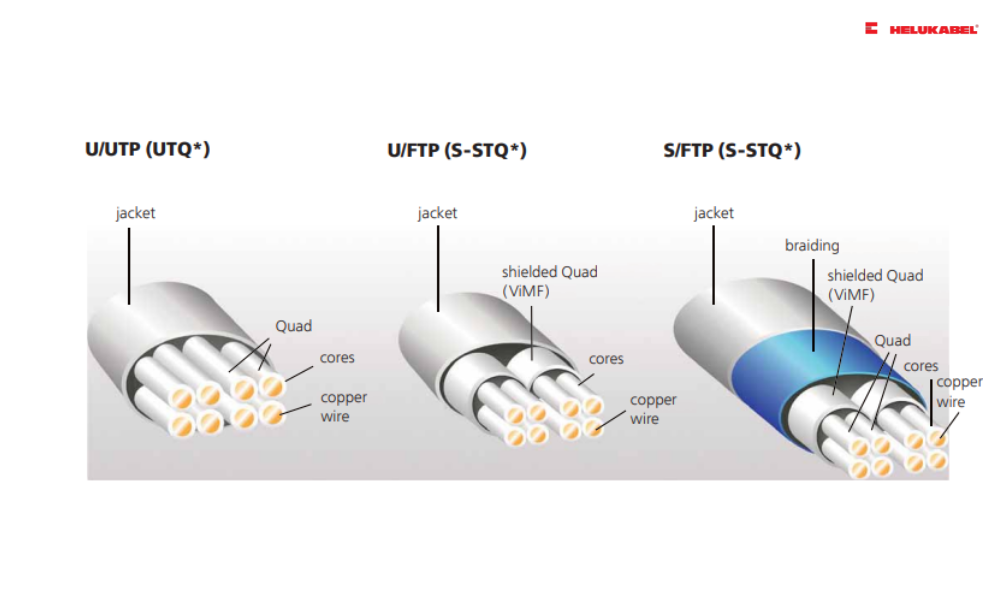
Shielded and unshielded Ethernet cables
Basic symbols for identifying types of shielding on Ethernet cables:
- U (Unshielded): Refers to Ethernet cables without a shielding layer.
- S (Shielded/Screened): Symbol for the type of Ethernet cable with a protective layer around each twisted pair, helping to enhance noise immunity.
- F (Foiled): Mark cables with a metal foil layer wrapped around them to minimize interference throughout the entire cable.
- TP (Twisted Pairs): Refers to cables that use twisted pairs of wires to reduce interference.
| Cable symbol | Description | Noise-canceling core | Overall noise reduction |
| U/UTP | Unshielded Twisted Pairs | No | No |
| F/UTP | Foiled with Unshielded Twisted Pairs | Metal shielding layer | No |
| U/FTP | Unshielded Foil-Covered Twisted Pairs | No | Metal shielding layer |
| S/UTP | Shielded with Unshielded Twisted Pairs | Copper | No |
| SF/UTP | Shielded and Foiled with Unshielded Twisted Pairs | Metal and copper braided shielding layer | No |
| F/FTP | Foiled with Foiled Twisted Pairs | Metal shielding layer | Metal shielding layer |
| S/FTP | Shielded with Foiled Twisted Pairs | Copper | Metal shielding layer |
| SF/FTP | Shielded and Foiled with Foiled Twisted Pairs | Metal and copper braided shielding layer | Metal shielding layer |
2.3 Solid and stranded Ethernet cables
Another difference between Ethernet cable types lies deep within the cable's core structure, specifically the copper core. Ethernet cable cores can be solid with a single conductor, or they can be twisted with multiple copper strands wrapped around each other. Each design has its own advantages and disadvantages.
Solid-core Ethernet cables are better conductors. They provide stable and superior electrical characteristics over a wider frequency range, are less affected by high-frequency interference, and have lower DC resistance than twisted-pair cables. In Power over Ethernet (PoE) applications, solid-core Ethernet cables are the preferred choice in uncontrolled temperature environments, such as on ceilings. Because they have lower DC resistance, less energy is lost as heat, which is a clear advantage, especially if the cable is longer than 4.5 meters (15 feet).
Stranded cables are more flexible than solid cables due to their high flexibility, which makes installation easier and reduces the risk of damage from bending. The number of copper strands in the cable determines its flexibility. The more copper strands, the more flexible the cable. However, the more copper strands, the higher the production cost. Therefore, twisted-pair Ethernet cables are typically designed to balance flexibility and cost.
3. Ethernet cable classification
When shopping for Ethernet cables on the market, you will see Ethernet cables labeled "Cat" followed by different numbers. "Cat" stands for "Category," usually accompanied by a number. Generally, the higher the number, the higher the performance of the Ethernet cable. Ethernet cables are classified based on bandwidth (measured in MHz), maximum data transfer speed (measured in megabits per second), and noise resistance.
Below is a list of some common types of Ethernet cables:
| Cable classification | Maximum data transfer rate | Maximum bandwidth |
| Category 3 | 10 Mbps | 16 megahertz |
| Category 4 | 26 megabits per second | 20 megahertz |
| Cat 5 | 100 Mbps | 100 megahertz |
| Cat 5e | 1000 Mbps | 100 megahertz |
| Cat 6 | 1000 Mbps | 250 megahertz |
| Cat 6A | 10 gigabits per second | 500 megahertz |
| Category 7 | 10 gigabits per second | 600 megahertz |
| Category 8 | 80 gigabits per second | 2 GHz |
3.1 Cat 3 and Cat 4 Ethernet cables
Cat 3 is a type of Ethernet cable consisting of three twisted pairs of copper wires. Cat 3 cables were used in computer networks in the 1990s, supporting 10-BaseT Ethernet networks. Cat 3 cables have a maximum bandwidth of 16 MHz and are compatible with RJ11 or RJ12 connectors.
Cat 4 cable consists of 8 twisted copper wires in 4 pairs. Cat 4 cable is the first type of Ethernet cable to use RJ45 connectors. The frequency of Cat 4 cable can reach up to 20 MHz.
3.2 Cat 5 Ethernet Cable
Introduced in 1995, Cat 5 cable has a data transfer speed of up to 100 Mbps. This cable is used for 10BaseT and 100BaseT (Fast Ethernet) networks, and can transmit data, video, and telephone signals over a maximum distance of 100 meters (328 feet).
Some Cat 5 Ethernet cable lines from HELUKABEL, such as:
- HELUKAT® 100IND CAT.5 SF/UTP PUR STATIC: features flame retardant properties, oil resistance, and is suitable for use in harsh environments.
- HELUKAT® 200S CAT.5 4C SF/UTP PUR CHAIN: Designed for use in cable chain systems and withstands extremely high loads caused by moving machine parts, ensuring superior signal transmission even under the most severe conditions.
- HELUKAT® 100IND CAT.5 WK SF/UTP X-FRNC FLEX: Cross-linking technology enhances thermal stability and effective oil resistance, making it particularly suitable for demanding temperature requirements in wind turbines.
- HELUKAT® 100 CAT.5 F/UTP FRNC FLEX: stands out with superior performance and high redundancy. The product supports the deployment of services such as Fast Ethernet, Ethernet, ATM155, FDDI, 4/16 Mbit/s token ring, or ISDN without any issues. Thanks to its optimized structure, the HELUKAT®100 series can be produced quickly and is easily compatible with all common RJ45 connectors.
3.3 Cat 5e Ethernet Cable
Cat 5e (the "e" stands for "enhanced") is an upgraded version of Cat 5 Ethernet cable, designed to reduce crosstalk, enabling speeds of up to 1000 Mbps – commonly referred to as "Gigabit Ethernet." Although Cat 5 and Cat 5e cables look quite similar, Cat 5e adheres to stricter IEEE standards. It is also the most widely used cable today due to its ability to support Gigabit speeds at a reasonable cost.
- HELUKAT® 100S CAT.5e 1000 V SF/UTP PUR CHAIN: Designed for use in cable chains and withstands repeated loads caused by moving machine parts. Thanks to its PUR sheath, the product also offers superior resistance to mineral oils, greases, and common lubricating coolants.
- HELUKAT® PROFInet B CAT.5e SF/UTP FRNC SHIPLINE: designed for use in marine and offshore industries such as shipbuilding and particularly suitable for Ethernet applications. The product ensures excellent transmission characteristics and can be used even in the most extreme conditions.
- HELUKAT® PROFInet A CAT.5e SF/UTP PE STATIC ARMOURED: designed for fixed installation in industrial networks. This Ethernet cable ensures excellent transmission even under the harshest conditions. This cable complies with the PROFInet Type A standard and, thanks to its special structure with an inner PVC sheath and outer PE sheath, is ideal for use in areas prone to rodent damage.
Additionally, users can refer to other Cat 5e Ethernet cable products from HELUKABEL such as: HELUKAT® PROFInet B CAT.5e SF/UTP PVC FESTOON (specifically designed for FESTOON applications), HELUKAT® 200 CAT.5e SF/UTP FRNC STATIC , HELUKABEL® EtherCAT-P100S-L CAT.5e SF/UTP PUR CHAIN...
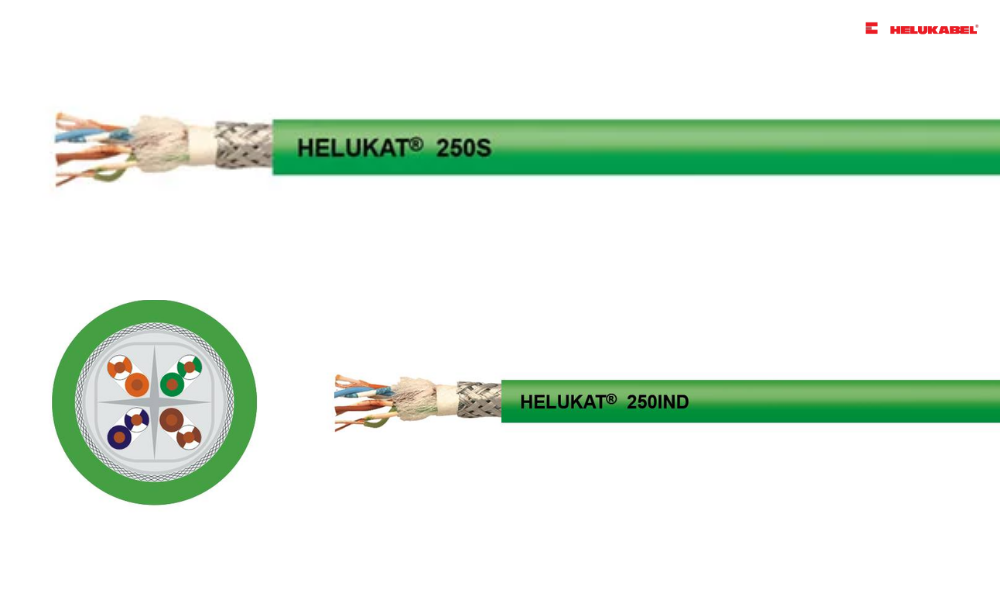
Cat 6 Ethernet cable
3.4 Cat 6 Ethernet Cable
Cat 6 cable can support speeds up to 10 Gbps and a maximum frequency of 250 MHz. While Cat 5e cable has about 1.5-2 twists per cm, Cat 6 cable is more tightly twisted with 2 or more twists per cm (the number of twists per cm may vary depending on the manufacturer). Cat 6 Ethernet cable also has a thicker jacket than Cat 5e, and is fully compatible with existing Cat 5e and Cat 5 devices.
Although standard Ethernet supports distances up to 100 meters, Cat 6 cable only supports distances between 37-55 meters (depending on crosstalk) when transmitting at 10 Gbps. The thicker jacket helps protect against Near End Crosstalk (NEXT) and Alien Crosstalk (AXT). Although Cat 6 and Cat 6a cables offer higher performance, many LANs still opt for Cat 5e cables due to their reasonable cost and ability to support Gigabit speeds.
Physically, Cat 6 cable has more twists per pair and a plastic tube running down the middle, which reduces crosstalk and allows for higher speeds. Cat 6a is a new standard designed to support speeds of 10 Gbps over the entire 100-meter length.
HELUAKBEL's Cat 6 Ethernet cables ensure superior transmission capabilities and can perform well even in the harshest conditions. Some representative products that users can refer to include:

Cat 6A Ethernet cable
3.5 Cat 6A Ethernet Cable
The letter "a" in Cat 6a Ethernet cable stands for "Augmented." Compared to standard Cat 6 cable, Cat 6a cable supports double the maximum bandwidth and is capable of maintaining higher transmission speeds over longer cable lengths. Cat 6a cable is always shielded, with a thick outer layer that completely eliminates crosstalk, making it less flexible than Cat 6.
Cat 6a cable can support bandwidth frequencies up to 500 MHz, double that of Cat 6 cable, and can also support 10 Gbps speeds like the previous version. However, unlike Cat 6 cable, Cat 6a Ethernet cable can support 10 Gigabit Ethernet at a distance of 100 meters, while Cat 6 cable can only transmit the same speed at a maximum distance of 37 meters. Cat 6a cable also has a more robust outer layer, which eliminates alien crosstalk (AXT) and improves the signal-to-noise ratio (SNR).
HELUKABEL offers a wide range of Cat 6A Ethernet cables, suitable for various applications:
- HELUKAT® 500IND CAT.6A S/FTP PUR STATIC : specially designed for fixed installations in harsh operating environments.
- HELUKAT 500S CAT.6A SF/FTP PVC CHAIN : is a line of Ethernet cables compatible with continuous motion applications such as cable chains, achieving UL CM certification.
- HELUKAT 500S CAT.6A SF/FTP SLIM PUR CHAIN : This product ensures superior transmission capabilities in extremely harsh conditions. With the ability to withstand repeated loads caused by moving applications, this cable line is used for cable chain systems.
3.6 Cat 7 Ethernet Cable
Cat 7 cable utilizes the latest available Ethernet technology and supports higher bandwidth and significantly faster transmission speeds compared to Cat 6 cable. Cat 7 cable can achieve speeds of up to 100 Gbps within a 15-meter distance, making it an excellent choice for connecting modems or routers directly to devices. This cable supports frequencies up to 600 MHz.
Cat 7 Ethernet cable features comprehensive shielding to reduce signal loss and offers greater rigidity compared to previous generations of Ethernet cable. The shielding must be grounded, and Cat 7 cable also requires the use of special GigaGate45 (CG45) connectors.
- HELUKAT® 600T CAT.7 SF/FTP PUR TORSION: certified to meet CC-Link IE Field standards. This cable line features many outstanding characteristics such as torsion resistance, abrasion resistance, tear resistance, cut resistance, wear resistance, low adhesion, etc., and is used for robot applications.
- HELUKAT 1200IND CAT.7A S/FTP PUR STATIC: This is a cable line with extended performance up to 1200 MHz. In terms of mechanical properties, this product offers excellent resistance to mineral oil, grease, and lubricating coolants, as well as good resistance to microorganisms and hydrolysis. In terms of electrical properties, this cable line stands out for its high redundancy and superior performance.
- HELUKAT 1000IND CAT.7A S/FTP PUR ROBUSTFLEX: With an outer jacket made from halogen-free PUR material, this Ethernet cable is ideal for harsh industrial environments. In addition, this cable is compatible with common RJ45 connectors (industrial and office versions), as well as some Sub-D and M12 connectors.
3.7 Cat 8 Ethernet Cable
CAT8 cable is the latest standard in Ethernet cables. CAT8.1 cable was introduced in 2016 and can reach maximum speeds of up to 25 Gbps. CAT8.2 cable is designed for 40GBase-T Ethernet. CAT8 cable is primarily used in data centers and other professional applications.
4. Ethernet cable for Single Pair Ethernet technology
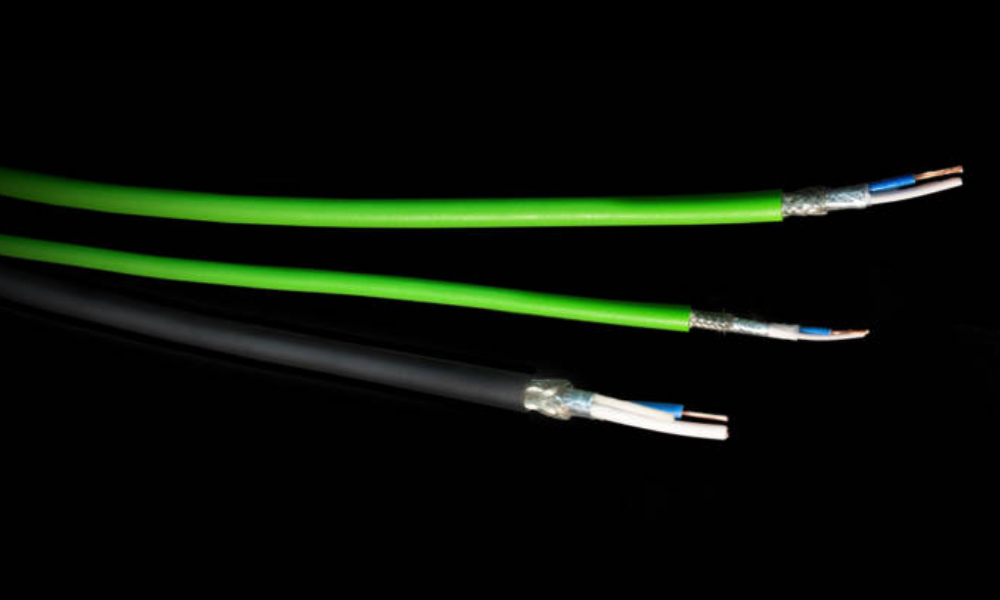
Ethernet cable for Single Pair Ethernet technology
Single Pair Ethernet (SPE) is a promising industrial communication technology for the future. Unlike previous Ethernet technologies such as PROFIBUS or PROFINET, SPE enables high-speed data transmission at gigabit speeds using only a single pair of wires. Even power can be supplied directly through the cable. This is a flexible, space-saving, and cost-effective solution that facilitates real-time communication with every small device in the system.
HELUKABEL offers a wide range of Ethernet cables for SPE technology, featuring diverse cross-sections, materials, and applications to meet various usage requirements. Some representative Ethernet cable products for SPE technology include: HELUKAT SPE 1000BASE-T1 Hybrid SPE, HELUKAT SPE 1000BASE-T1 Highlex AWG 26/19, HELUKAT SPE 10BASE-T1L AWG 18/1 PVC UL AWM.
>>Learn more: HELUKABEL cables for Single Pair Ethernet technology
5. Top 60+ Ethernet Cable Models from HELUKABEL
1. HELUKAT® 600 CAT.7e S/FTP FNRC STATIC Ethernet Cable
2. HELUKAT® 600 CAT.7 S/FTP FRNC FLEX cable, gray, 4 x 2 x AWG 26 /7
3. HELUKAT® 200 CAT.5e SF/UTP FRNC STATIC Cable
4. HELUKAT® 600E CAT.7e S/FTP PVC STATIC black cable 4 x 2 x AWG 23 /1
5. HELUKAT® 500 CAT.6A F/FTP FRNC STATIC Cable
6. HELUKAT® 450 CAT.6 F/FTP FRNC STATIC green Ethernet cable 4 x 2 x AWG 24 /1
7. HELUKAT® 200 CAT.5e SF/UTP FRNC FLEX cable, gray, 4 x 2 x AWG 26 /7
8. HELUKAT® 600A CAT.7e S/FTP PVC STATIC black cable 4 x 2 x AWG 23 /1
9. HELUKAT® 155 CAT.5e U/UTP PVC STATIC grey cable 4 x 2 x AWG 24 /1
10. HELUKAT® 200 CAT.5e F/UTP PVC FLEX cable, gray, 4 x 2 x AWG 26 /7
11. HELUKAT® 100 CAT.5 U/UTP PVC FLEX cable, gray, 4 x 2 x AWG 26 /7
12. HELUKAT® 300 CAT.6 U/FTP PVC FLEX cable, gray, 4 x 2 x AWG 26 /7
13. HELUKAT® 1200 CAT.7e S/FTP FRNC STATIC blue cable 4 x 2 x AWG 22 /1
14. HELUKAT® 1500 CAT.7A S/FTP FRNC STATIC Cable
15. HELUKAT® 155 CAT.5e F/UTP PVC STATIC yellow Ethernet cable 4 x 2 x AWG 24 /1
16. HELUKAT® 100-PH120 CAT.5 F/UTP FR-0H STATIC red cable 4 x 2 x AWG 23 /1
17. HELUKAT® 100T CAT.5e S/UTP PUR TORSION green cable 2 x 2 x AWG 22 /19
18. HELUKAT® 100 CAT.5 F/UTP FRNC FLEX cable, gray, 4 x 2 x AWG 26 /7
19. HELUKAT® 1200 CAT.7A S/FTP LSZH STATIC Cable
20. HELUKAT® 200 CAT.5e SF/UTP PVC STATIC grey cable 4 x 2 x AWG 24 /1
21. HELUKAT® 200A CAT.5e F/UTP PE STATIC black cable 4 x 2 x AWG 24 /1
22. HELUKAT® 300 CAT.6 U/UTP FRNC FLEX Ethernet Cable
23. HELUKAT® 300 CAT.6 U/UTP FRNC STATIC green cable 4 x 2 x AWG 24 /1
24. HELUKAT® 300 CAT.6 U/UTP PVC STATIC grey cable 4 x 2 x AWG 24 /1
25. HELUKAT® 300A CAT.6 U/UTP PE STATIC black cable 4 x 2 x AWG 24 /1
26. HELUKAT® 600 CAT.6A U/UTP FRNC STATIC Cable
27. HELUKAT® 600AE CAT.7e S/FTP PE STATIC black Ethernet cable 4 x 2 x AWG 23 /1
28. HELUKAT® PROFInet C CAT.5e SF/UTP PUR CHAIN green cable 2 x 2 x AWG 22 /7
29. HELUKAT® PROFInet A CAT.5e SF/UTP PVC STATIC green cable 2 x 2 x AWG 22 /1
30. HELUKAT® PROFInet B CAT.5e SF/UTP PVC FLEX green cable 2 x 2 x AWG 22 /7
31. HELUKAT® 100S CAT.5e 30 V 4C SF/UTP PUR CHAIN green cable 2 x 2 x AWG 26 /19
32. HELUKAT® 600IND CAT.7 S/FTP PUR ROBUSTFLEX green Ethernet cable 4 x 2 x AWG 26 /7
33. HELUKAT® 100S CAT.5e 30 V 4P SF/UTP PUR CHAIN green cable 4 x 2 x AWG 26 /19
34. HELUKAT® 200S CAT.5 4P SF/UTP PUR CHAIN green cable 4 x 2 x AWG 24 /19
35. HELUKAT® 600IND CAT.7e S/FTP PUR STATIC Cable
36. HELUKAT® 200IND CAT.5e SF/UTP PUR ROBUSTFLEX Ethernet Cable, Grey, 4 x 2 x AWG 26 /7
37. HELUKAT® 100T CAT.5 SF/UTP PUR TORSION green cable 4 x 2 x AWG 26 /19
38. HELUKAT® 250S CAT.6 CMX SF/UTP PUR CHAIN green cable 4 x 2 x AWG 26 /19
39. HELUKAT® 500IND CAT.6A SK S/FTP PVC STATIC green cable 4 x 2 x AWG 22 /1
40. HELUKAT® PROFInet A CAT.5e SF/UTP PUR STATIC green Ethernet cable 2 x 2 x AWG 22 /1
41. HELUKAT® PROFInet B CAT.5e SF/UTP FRNC FLEX green cable 2 x 2 x AWG 22 /7
42. HELUKAT® PROFInet C CAT.5e SF/UTP PVC CHAIN green Ethernet cable 2 x 2 x AWG 22 /7
43. HELUKAT® 100T CAT.5e S/UTP PUR TORSION green Ethernet cable 2 x 2 x AWG 22 /19
44. HELUKAT® PROFInet A CAT.5e SF/UTP PE STATIC ARMOURED black cable 2 x 2 x AWG 22 /1
45. HELUKAT® 600S CAT.7 SF/FTP PUR CHAIN green Ethernet cable 4 x 2 x AWG 24 /7
46. HELUKAT® 500S CAT.6A SF/FTP SLIM PUR CHAIN green Ethernet cable 4 x 2 x AWG 26 /7
47. HELUKAT® 500S CAT.6A SF/FTP PUR CHAIN green Ethernet cable 4 x 2 x AWG 24 /7
48. HELUKAT® 100IND CAT.5 WK SF/UTP X-FRNC FLEX black cable 2 x 2 x AWG 22 /7
49. HELUKAT® 500S CAT.6A SF/FTP PVC CHAIN green Ethernet cable 4 x 2 x AWG 24 /7
50. HELUKAT® 250IND CAT.6 CMG SF/UTP PVC STATIC green cable 4 x 2 x AWG 24 /1
51. HELUKAT® Ethernet Cable 100IND CAT.5 SF/UTP PUR ROBUSTFLEX blue 2 x 2 x AWG 26 /7
52. HELUKAT 1000IND CAT.7A S/FTP PUR ROBUSTFLEX green Ethernet cable 4 x 2 x AWG 26 /7
53. HELUKAT® PROFInet B CAT.5e SF/UTP FRNC SHIPLINE green cable 2 x 2 x AWG 22 /7
54. HELUKAT® 1200IND CAT.7A S/FTP PUR STATIC green cable 4 x 2 x AWG 23 /1
55. HELUKAT® 200S CAT.5 4C SF/UTP PUR CHAIN green cable 4 x 1 x AWG 24 /19
56. HELUKAT® Ethernet Cable 100IND CAT.5 SF/UTP PUR STATIC blue 2 x 2 x AWG 24 /1
57. HELUKAT® 600T CAT.7 SF/FTP PUR TORSION green Ethernet cable 4 x 2 x AWG 24 /7
58. HELUKAT® Ethernet Cable 100IND CAT.5e SF/UTP FRNC FLEX blue 2 x 2 x AWG 26 /7
59. HELUKAT® 500IND CAT.6A S/FTP PUR STATIC Ethernet Cable
60. HELUKABEL® EtherCAT-P100S-L CAT.5e SF/UTP PUR CHAIN Ethernet Cable, black-red, 4 x 1 x AWG 22 /7
61. HELUKAT® 100IND CAT.5 SF/UTP FRNC STATIC Ethernet Cable
62. HELUKAT® 250IND CAT.6 AWM SF/UTP PVC STATIC Ethernet Cable
63. HELUKAT® PROFInet B CAT.5e SF/UTP PVC FESTOON Ethernet Cable
We hope that this article has given you a better understanding of Ethernet cables. If you need further advice on the products introduced, please contact the HELUKABEL Vietnam engineering team immediately!
HELUKABEL® Vietnam
| Address | 905 Nguyen Kiem Street, Ward 3, Go Vap District, Ho Chi Minh City 700000 |
| info@helukabel.com.vn | |
| Hotline | +84 28 77755578 |
| Website | www.helukabel.com.vn |
| Discover and purchase our products on | Tiki | Product finder |
| Connect with us on | Facebook | LinkedIn | Instagram | YouTube | Zalo | WhatsApp | TikTok | Spotify |

